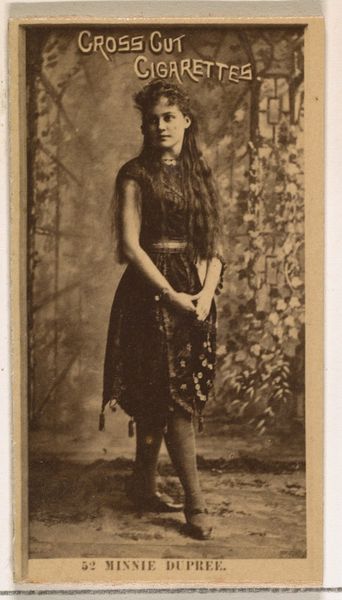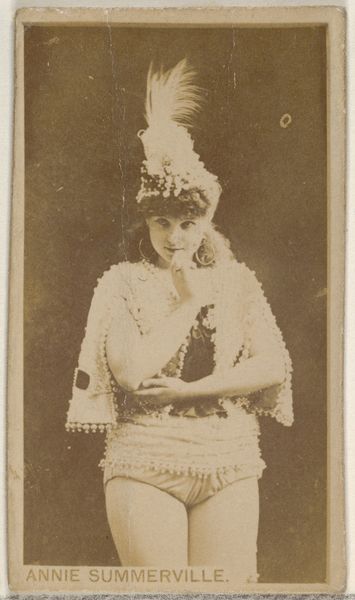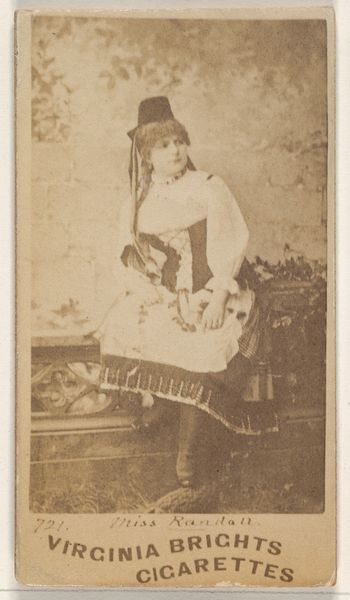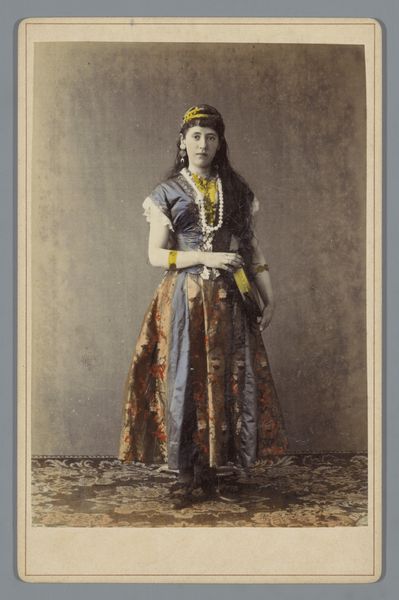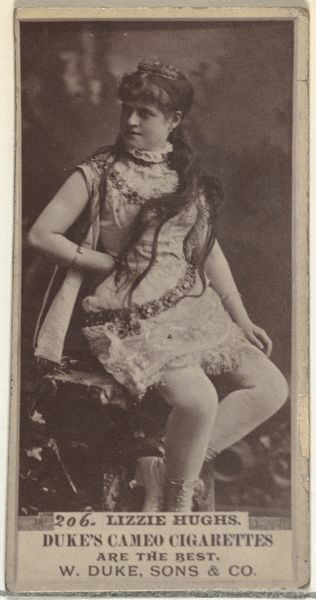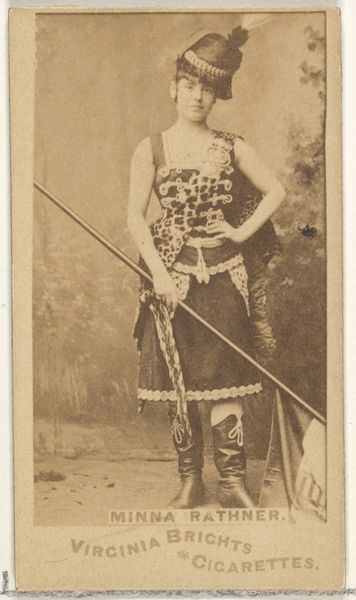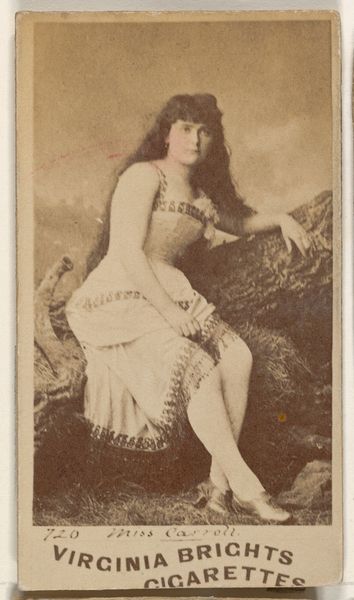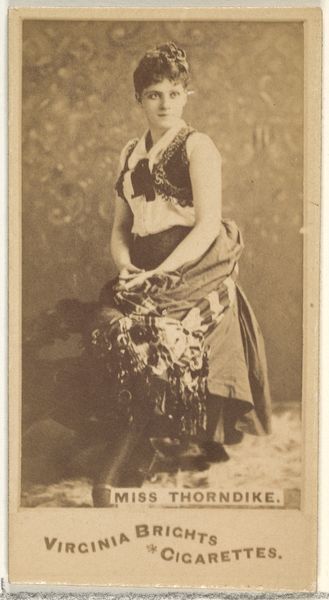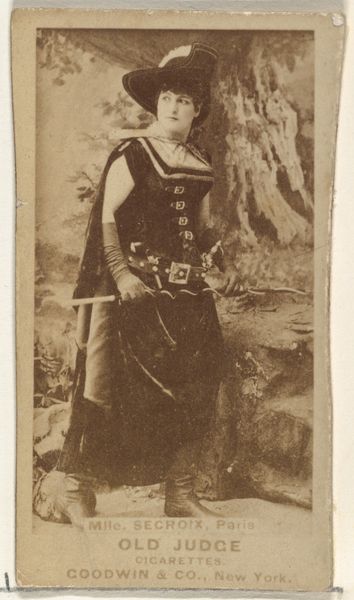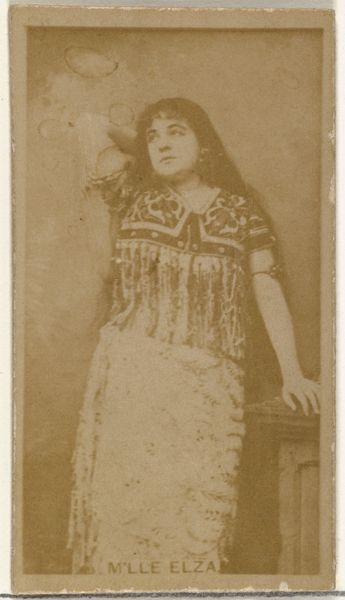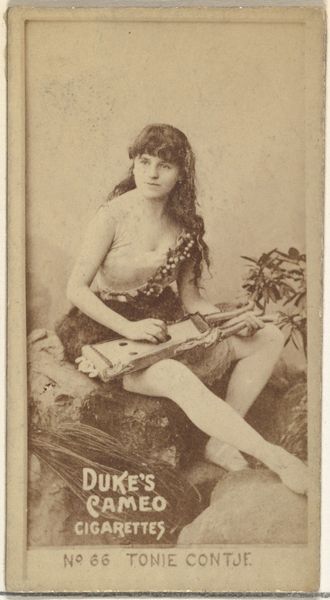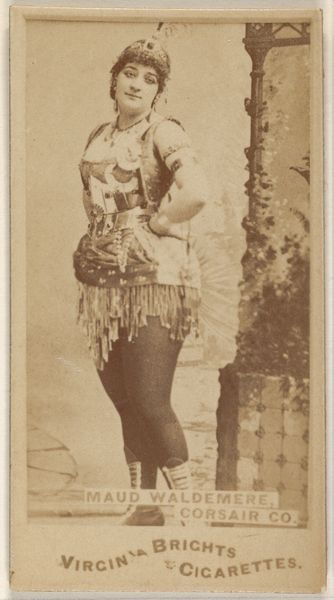
Mattie Rudisill, from the Actors and Actresses series (N171) for Old Judge Cigarettes 1886 - 1890
0:00
0:00
albumen-print, print, photography, albumen-print
#
albumen-print
#
portrait
#
yellowing background
# print
#
photography
#
albumen-print
Dimensions: sheet: 2 11/16 x 1 3/8 in. (6.9 x 3.5 cm)
Copyright: Public Domain
Editor: This is "Mattie Rudisill, from the Actors and Actresses series (N171) for Old Judge Cigarettes" made sometime between 1886 and 1890 by Goodwin & Company. It's an albumen print card. It's fascinating how this photograph seems to blend portraiture with, almost, an imagined historical narrative. How do you read this piece, especially given its origin as a cigarette advertisement? Curator: It’s essential to understand how these cards, and the romanticized image of Mattie Rudisill, functioned within the cultural landscape of the late 19th century. This era was marked by the rise of consumer culture and anxieties surrounding industrialization. Consider how the “Old Judge Cigarettes” brand, through this image, associated itself with ideas of the "frontier," "the exotic," even "the noble savage." Doesn’t the card subtly play into the appropriation and commodification of Indigenous imagery for profit? Editor: That's a really interesting point! I was so focused on the visual elements. Now I can see that the so-called “noble savage” theme would have resonated with consumers even if they weren't consciously aware of the complexities surrounding it. Curator: Precisely. These images normalize a dominant, white perspective by creating a palatable, easily consumed narrative. The choice of an actress playing a role reinforces the idea of "otherness" as performance, obscuring genuine cultural understanding and lived experiences. Does it now shift how you understand the image’s composition – her gaze, the staging, the "Indian" attire? Editor: It definitely does. I see now that what initially appeared to be a straightforward portrait is actually layered with complex socio-political undertones. It also makes me question my own assumptions about historical images. Curator: It’s a perfect example of how even seemingly innocuous images can be potent carriers of cultural biases and historical distortions. By analyzing such works through an intersectional lens, we uncover deeper truths about the society that produced them. Editor: Absolutely. This has given me a new perspective on how to look at not only historical advertisements but portraiture in general. Thanks so much!
Comments
No comments
Be the first to comment and join the conversation on the ultimate creative platform.
